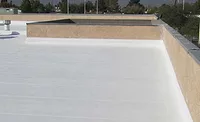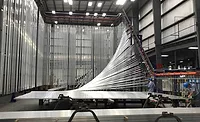Coatings Special Section
How Inland Coatings Averted Irrelevance
In the world of coatings and sealants, a once moribund brand known for quality but lingering in the shadows transforms through private equity
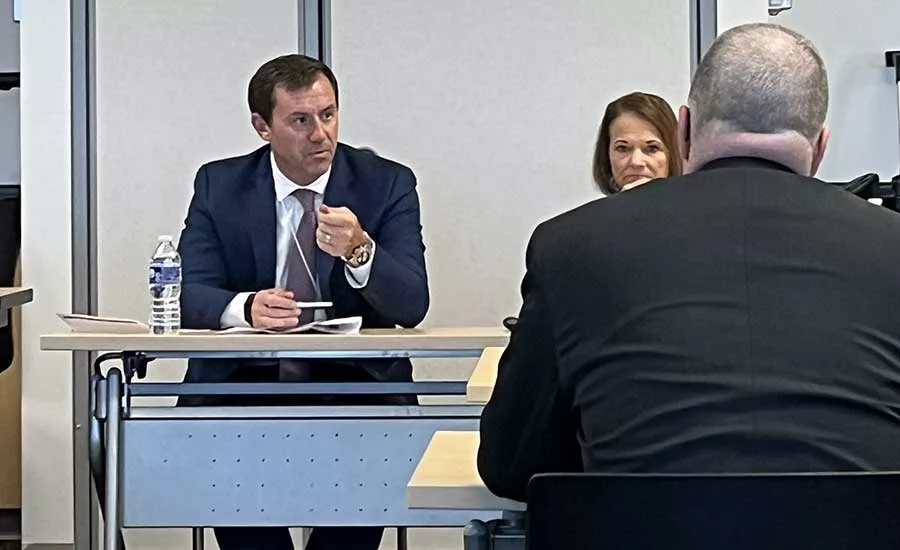
The history of using coatings in roofing has an interesting, if not somewhat checkered, past — a burst of innovation battling against cheap imitations and improper use by those unfamiliar with its appropriate application.
Like most nascent industry subsets, wheat separates from chaff, and the coating and sealants space is no different. Similarly, just as its development and use have undergone refinements over the last half-century, so have their manufacturers.
Few, if any, of its pioneers — the chemists whose concoctions of various compounds became adopted in the building envelope, aerospace, automotive and transportation industries — are still alive. And, at least in roofing, the companies many started have been absorbed into other brands, their names left to those with long memories.
Contractors are undoubtedly familiar with the companies and brands that dominate today's market. Of all the names in the space, one has endured: Inland Coatings of Adel, Iowa.
Inland Coatings’ story could one day become a case study in corporate turnarounds taught at business schools. Yet it all could have ended differently but not for two of the story's protagonists who possessed character traits significantly helpful in unearthing success: foresight and tenacity.
Foresight: ‘Antique Roadshow’
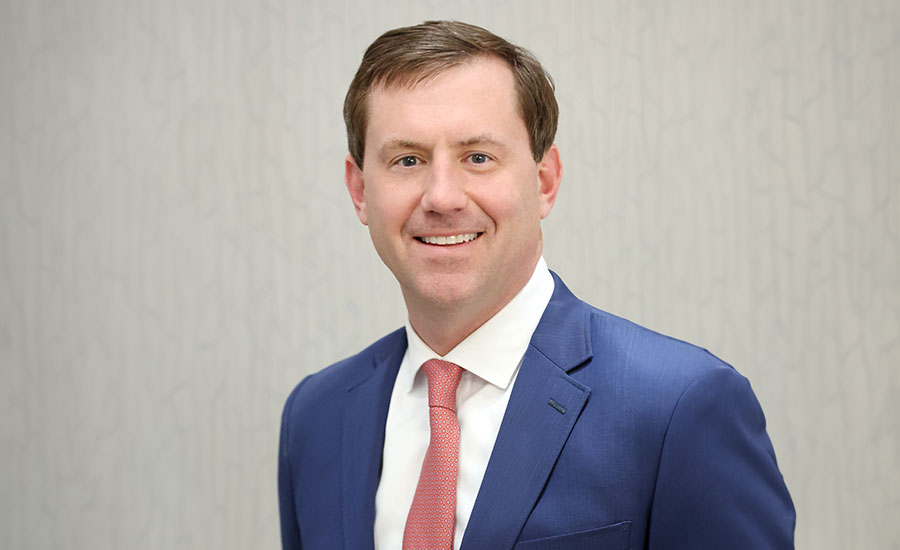
John Mickelson, managing partner of Midwest Growth Partners
You know the PBS show “Antique Roadshow,” which occasionally features people bringing in items to appraisers, thinking it’s junk and instead turns out to be a hidden treasure? While not an apple-to-apple comparison, Inland Coatings fit that profile: the firm had seen better days by many, but one group of entrepreneurs saw something in the company that made it worth the bet.
Having come to market with its flagship synthetic rubber roof coating product in 1978 — a patented blend of compounds and chemicals — Inland Coatings quickly became a market leader, helping define the space.
The product was unique for its time, so Larry Chapman, the company’s founder, kept its name above the fray when the market rapidly expanded in the 1980s when much of those woes mentioned earlier gave coatings and sealants a black eye.
But as times changed — more specifically, industry practices involving distribution, diversification and market penetration evolved — Inland Coatings failed to keep up. The one thing that remained consistent was its quality. And as choices increased, those outside its existing clients who knew of Inland Coatings may have been in the know, but a manufacturer can’t grow in step with an industry solely on in-the-know.
By 2014, with the founder dead for about five years and the company languishing in a trust while Chapman’s adult daughters weighed their options, the cowboy in a white hat — in this case, a private equity firm called Midwest Growth Partners — rode into town.
The terms of the deal remain undisclosed, but John Mickelson, managing partner at Midwest Growth Partners, knew the company had good bones when he made a deal with the founding family: Inland enjoyed unsullied standing in its offering and existed in a still-fragmented market poised for possibility.
Mickelson said Inland was not unique: a strong leader who never built out his C-suite nor thought much of information technology, facilities upgrades, broadening product lines or other critical elements that foster growth. When MPG purchased Inland Coatings from the family, it had six full-time and two part-time employees, according to an article in the Des Moines Register. At the time of the acquisition, Doug Walmsley, its president, was also Inland’s first employee, hired in 1978, Mickelson noted.
“And so our job when we got in there was to do all those [best practices],” Mickelson said. “[The founder] had not taken the business the next step in terms of adding people to the C-suite, adding technology, diversifying the customer base … so that was our task.”
That MGP’s office in Des Moines was only 20 minutes from the Ames plant where Inland Coatings operated likely made the deal more attractive. From there, MGP went to work, closing on the transaction and setting off to make a high-quality, one-trick-pony manufacturer into a modern-day player in the market.
“They had one roof coating line … but had close to 40 years of business operating experience and had lots of loyal customers and great products,” Mickelson said of his initial impression of Inland Coatings. “It was kind of a sleepy little company that was very profitable and had done a good job.”
MGP leaned in on its quality while sweeping away the cobwebs and retrofitting its operations. Mickelson said he and his partners also took the time to learn about the industry, where trends were heading and meeting various players in the expansive yet insular roofing world.
“As we looked at the industry, there were other coatings, water-based, and things like that, that we knew certain customers would ultimately want, so we spent a lot of time going to the various contractor association shows,” he said, naming-checking the International Roofing Expo in particular.
At the same time, MGP built Inland’s leadership team. Walmsley, the company’s first hire and then president, stayed on and received a stake for himself. But Walmsley was not the future. For that, MGP had to recruit someone who understood the potential, had experience with a top-shelf product, and could make it work.
Diversifying Inland’s product line was arguably a more straightforward task: that just took money and timing. The first is why private equity firms exist; the second is more patience than anything, and opportunity is not immutable. After the Inland purchase, MGP found two other coating and sealant manufacturers it could acquire, which would complement Inland’s product line while expanding its overall offerings and expand its distribution channels.
In 2018, MGP purchased TRUCO from its founding family. Based in Cleveland, the acquisition provided Inland with different products to offer customers but also gave the Iowa company entrée into markets east of the Mississippi River.
Less than two years later, MGP pulled off its hat trick after acquiring Aldo Products Co., based in North Carolina, and placed it on the shelf next to TRUCO and Inland Coatings. The expansion element of the turnaround was gelling.
Tenacity: The 'Chemistry' of Marketing
— Cordian McGinley, president, Inland Coatings
The same year MGP acquired TRUCO in 2018, it was also scouting for a future leader to helm the firm. Finding someone who checked all the boxes is often a needle-in-the-haystack adventure, but within the private equity sphere, connections can help.
“The company already had three or four years of [revamping] before I came and joined, and [I] learned early on that this is a great business, low risk, with a high-quality product,” explains Coridan McGinley, president of Inland Coatings.
“[MGP] knew they had a [good] mousetrap, so to speak, but what [they also knew] was missing were those building blocks, like marketing and business development,” he added. “So, when I was introduced to MGP through a mutual person, I was able to speak well to that side of the business’s needs.”
McGinley, now 39, is what any company would look for in a leader: depth of knowledge, skill and experience. He speaks with authority without coming across as flippant, and in terms of qualities Inland Coatings was looking for to build its leadership team, he could be deemed a unicorn — experience as an account manager with top-shelf window and door manufacturer Pella.
The difference between selling windows and doors versus coatings and sealants is, at its base, negligible — unless you’re a chemist. As McGinley noted, the mousetrap was built, but one who understands what drives a customer willing to pay a premium for a high-end product is what Inland needed.
McGinley, who was brought onto the team early in 2018, helped execute the strategy with the acquisition of TRUCO, which Inland used as a springboard to begin reinvigorating the brand. He also took advantage of the overlap with Walmsley, Inland’s original first hire.
“Doug was a great mentor of mine,” McGinley recalls. “I was fortunate to spend 18 months alongside Doug, [who was] very much a chemist; I was very much not.”
Which, of course, was the point. Better chemistry wouldn’t make Inland Coatings grow its market share. Yet, because its name recognition was well established, it seemed foolish to change it; it would also become a misnomer: while still a brand, Inland Coatings was also transforming into a holding company.
Growth through acquisition is why the planned TRUCO purchase was a critical component in both MGP’s and McGinley’s eyes: help make Inland relevant again to tee it up for the type of sustainable growth all players involved expected to achieve.
“[Inland Coating] had been around for over 40 years, so how do we grow this thing? What are we going to do? How do you get some street credibility back into the coating [world]? McGinley asks rhetorically. “Well, you start with your marketing strategy: trying to figure out how we're going to go back to the market; how are we going to reinvent the brand, create some excitement out in the marketplace.”
That November, the TRUCO deal closed and, as expected, was noticed in the industry and picked up by the media, including Roofing Contractor magazine in a Nov. 6, 2018, article reporting on the sale:
“In addition, TRUCO operates in a space we know extremely well,” McGinley said [at the time]. “This experience will benefit both Inland Coatings and TRUCO as we share best practices and focus on exceeding our customer’s expectations. We are pleased to have more options to better serve contractors, architects, consultants, and building owners.”
Another thing McGinley recognized was that, despite being based in Iowa, the firm had few clients locally.
“So, being based in Iowa and not really selling product here, there was some low-hanging fruit,” he said. “We needed to grow, to service other markets, so during my tenure, we added the two additional acquisitions, similar companies, in Ohio and North Carolina, and each acquisition gave us something we didn’t have previously,”
The second purchase, Aldo, gave the company more depth in its bench, allowing it to offer products it had previously not stocked, McGinley noted.
“With the North Carolina acquisition, our product portfolio expanded overnight, making us unique in the industry by the breadth of offerings we now have,” McGinley says. “There's not a lot of other players that are our size that have a product portfolio like we do.”
Within a year of the TRUCO and Aldo closings, McGinley was elevated to president of the company and will be celebrating his fourth anniversary in the role this November. Now with multiple manufacturing sites and established markets in regions across North America, the company performs as designed: it has grown.
“If you looked at [us] five years ago, I said our market was really the Northwest, and today our markets are really strong in the Southeast, Ohio Valley, all without losing market share in the Northwest,” he says. “And we're picking up additional ground all the time.”
The firm, from MGP’s perspective, was operating spectacularly. McGinley said Inland Coatings’ growth had lapped itself twice — more than 200% — since the private equity fund purchased it almost a decade earlier.
In less than 10 years, MGP, with McGinley’s help, took a one-off manufacturer of a single specialty product and created a portfolio company with three brands and hundreds of products in multiple markets throughout North America.
By any yardstick, but particularly in finance and investment, that type of growth gives firms like MGP the credibility to take gambles on companies others may not even see potential in.
And, still, at some point, the chick leaves the nest.
Bye Bye Birdie
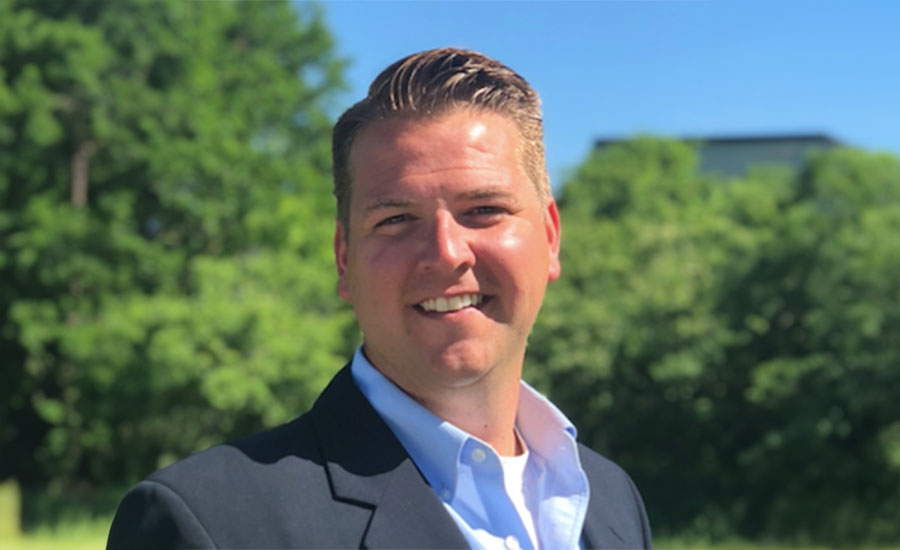
Coridan McGinley, the 39-year-old president of Inland Coatings, a holding company as much as a brand; the company also owns the TRUCO and Aldo coating lines.
On May 24, 2021, a press release was sent out of West Des Moines, Iowa, letting the business community know that Midwest Growth Partners, which had purchased a nearly-forgotten liquid coating manufacturer 20 minutes from its headquarters seven years earlier, was divesting, selling to a then-unidentified “strategic” buyer.
The mystery is now solved: Garland Industries was that “strategic” player. In that 2021 press release, a statement by McGinley read, in part: “On one hand, we are sad to exit from the MGP portfolio, but on the other, we are excited to enter the family of the strategic buyer who we believe is an excellent fit for the Company and Inland’s employees.”
By his account, the arrangement has worked well. McGinley describes its place in Garland — a maze of different subsidiaries — as but one quiver in its large arsenal. As Inland’s president, the buck stops with him, which is likely why he and his team were part of the acquisition.
With Inland still increasing its market share today, McGinley, whose praise for MGP and Mickelson is duly noted and appropriate, feels satisfied. Don’t confuse that with complacency because the man has plans. And he’s sharp, as demonstrated by Inland’s turnaround.
“I have passion, and I love the strategy; I love the growth,” he says. “It's one thing to [speak about it], but it's much more fun to practice and experience it.”
Looking for a reprint of this article?
From high-res PDFs to custom plaques, order your copy today!





